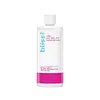What's inside
What's inside
 Key Ingredients
Key Ingredients

 Benefits
Benefits

 Concerns
Concerns

 Ingredients Side-by-side
Ingredients Side-by-side

Water
Skin ConditioningLactic Acid
BufferingPropanediol
SolventSodium Hydroxide
BufferingGlycolic Acid
BufferingGlycerin
HumectantSodium Citrate
BufferingGluconolactone
Skin ConditioningSalicylic Acid
MaskingChamomilla Recutita Flower Extract
MaskingCalendula Officinalis Flower Extract
MaskingCamellia Sinensis Leaf Extract
AntimicrobialSodium Surfactin
CleansingAllantoin
Skin ConditioningResveratrol
AntioxidantAcacia Senegal Gum
MaskingXanthan Gum
EmulsifyingCeramide Ng
Skin ConditioningGlyceryl Caprylate
EmollientPolyglyceryl-4 Laurate/Succinate
Polyglyceryl-6 Oleate
EmulsifyingCaprylyl/Capryl Glucoside
CleansingSodium Cocoyl Glutamate
CleansingTetrasodium Glutamate Diacetate
Sodium Benzoate
MaskingCitric Acid
BufferingWater, Lactic Acid, Propanediol, Sodium Hydroxide, Glycolic Acid, Glycerin, Sodium Citrate, Gluconolactone, Salicylic Acid, Chamomilla Recutita Flower Extract, Calendula Officinalis Flower Extract, Camellia Sinensis Leaf Extract, Sodium Surfactin, Allantoin, Resveratrol, Acacia Senegal Gum, Xanthan Gum, Ceramide Ng, Glyceryl Caprylate, Polyglyceryl-4 Laurate/Succinate, Polyglyceryl-6 Oleate, Caprylyl/Capryl Glucoside, Sodium Cocoyl Glutamate, Tetrasodium Glutamate Diacetate, Sodium Benzoate, Citric Acid
Salicylic Acid 2%
MaskingWater
Skin ConditioningDipropylene Glycol
HumectantPentylene Glycol
Skin ConditioningPolysorbate 20
EmulsifyingButylene Glycol
HumectantGlycerin
HumectantSodium Hyaluronate
HumectantDipotassium Glycyrrhizate
HumectantAllantoin
Skin ConditioningPanthenol
Skin ConditioningPEG/PPG-17/6 Copolymer
SolventMethyl Gluceth-20
HumectantGlycereth-26
HumectantBis-PEG-18 Methyl Ether Dimethyl Silane
EmollientSodium Hydroxide
BufferingTetrasodium EDTA
Sodium Metabisulfite
AntioxidantSalicylic Acid 2%, Water, Dipropylene Glycol, Pentylene Glycol, Polysorbate 20, Butylene Glycol, Glycerin, Sodium Hyaluronate, Dipotassium Glycyrrhizate, Allantoin, Panthenol, PEG/PPG-17/6 Copolymer, Methyl Gluceth-20, Glycereth-26, Bis-PEG-18 Methyl Ether Dimethyl Silane, Sodium Hydroxide, Tetrasodium EDTA, Sodium Metabisulfite
 Reviews
Reviews

Ingredients Explained
These ingredients are found in both products.
Ingredients higher up in an ingredient list are typically present in a larger amount.
Allantoin is a soothing ingredient known for its protective and moisturizingg properties. Because of this, it is often added to products with strong active ingredients.
Studies show higher concentrations of this ingredient can promote wound healing.
Though it can be derived from the comfrey plant, allantoin is produced synthetically for cosmetic products to ensure purity.
Learn more about AllantoinGlycerin is already naturally found in your skin. It helps moisturize and protect your skin.
A study from 2016 found glycerin to be more effective as a humectant than AHAs and hyaluronic acid.
As a humectant, it helps the skin stay hydrated by pulling moisture to your skin. The low molecular weight of glycerin allows it to pull moisture into the deeper layers of your skin.
Hydrated skin improves your skin barrier; Your skin barrier helps protect against irritants and bacteria.
Glycerin has also been found to have antimicrobial and antiviral properties. Due to these properties, glycerin is often used in wound and burn treatments.
In cosmetics, glycerin is usually derived from plants such as soybean or palm. However, it can also be sourced from animals, such as tallow or animal fat.
This ingredient is organic, colorless, odorless, and non-toxic.
Glycerin is the name for this ingredient in American English. British English uses Glycerol/Glycerine.
Learn more about GlycerinSalicylic Acid (also known as beta hydroxy acid or BHA) is a well-known ingredient for treating skin that struggles with acne and clogged pores. It exfoliates both the skin's surface and deep within the pores to help clear out buildup, control oil, and reduce inflammation.
Unlike AHAs (alpha hydroxy acids), salicylic acid is oil-soluble. This allows it to penetrate into pores which makes it especially effective for treating blackheads and preventing future breakouts.
Salicylic acid is also known for its soothing properties. It has a similar structure to aspirin and can calm inflamed or irritated skin, making it a good option for acne-prone skin that is also sensitive.
Concentrations of 0.5-2% are recognized by the U.S. FDA as an over-the-counter topical acne product.
It can cause irritation and/or dryness if one's skin already has a compromised moisture barrier, so it's best to focus on repairing that before introducing this ingredient into your routine.
While salicylic acid does not increase sun sensitivity, it’s still important to wear sunscreen daily to protect your skin.
If you are looking for the ingredient called BHA or Butylated Hydroxyanisole, click here.
Learn more about Salicylic AcidSodium Hydroxide is also known as lye or caustic soda. It is used to adjust the pH of products; many ingredients require a specific pH to be effective.
In small amounts, sodium hydroxide is considered safe to use. However, large amounts may cause chemical burns due to its high alkaline.
Your skin has a natural pH and acid mantle. This acid mantle helps prevent harmful bacteria from breaking through. The acid mantle also helps keep your skin hydrated.
"Alkaline" refers to a high pH level. A low pH level would be considered acidic.
Learn more about Sodium HydroxideWater. It's the most common cosmetic ingredient of all. You'll usually see it at the top of ingredient lists, meaning that it makes up the largest part of the product.
So why is it so popular? Water most often acts as a solvent - this means that it helps dissolve other ingredients into the formulation.
You'll also recognize water as that liquid we all need to stay alive. If you see this, drink a glass of water. Stay hydrated!
Learn more about Water